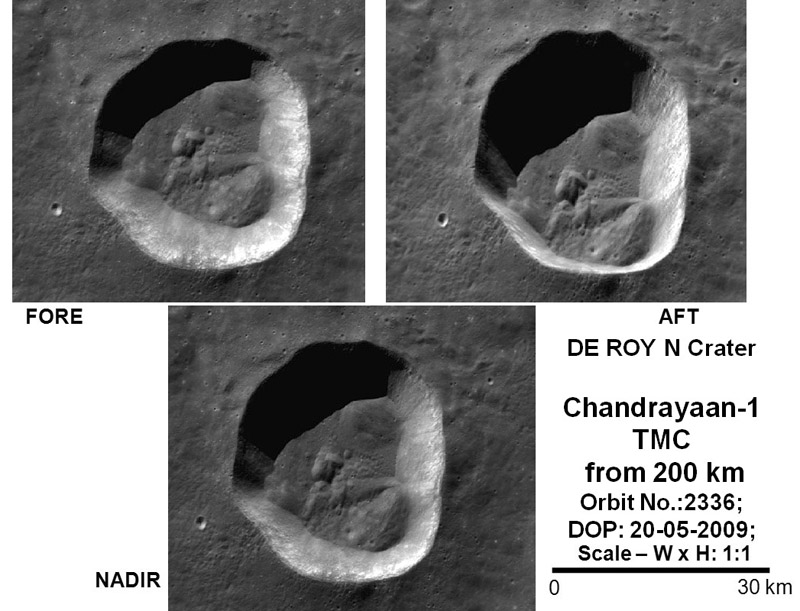October 26, 2018
Perspective
Originally published August 12, 2009

image from Chandrayaan image gallery
The way things look depends on where you look from. The Terrain Camera (TC) on the Chandrayaan-1 lunar orbiter from India takes images looking forward and backwards (fore and aft) as well as straight down (nadir). Looking straight down gives the most accurate depiction - a map view. According to the TC description the fore and aft views are each 25° away from normal, so I'd expect both images to have the same amount of distortion. I am surprised in this example at how much more distortion there is in the aft view than the fore one. Notice the very great width of the shadowed zone, and the narrow amount of the bottom wall on the aft view, compared to the others. The crater in the aft view looks much deeper than it appears in the other two. When we observe from Earth we see the same sort of distortion due to changing perspective. Craters near the center of face of the Moon are displayed nearly in map view, and closer to the limb the Moon's curvature changes the amount visible of near and far walls. Libration does the same thing, shifting floors of many near limb craters completely in of out of visibility.
Chuck Wood
Related Links
De Roy N is a 26 km wide farside crater near Hausen and visible on The Clementine Atlas plate 135.
Yesterday's LPOD: The Pillars of Earth
Tomorrow's LPOD: Land Lost in Time
COMMENTS?
Register, Log in, and join in the comments.



